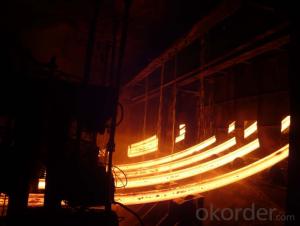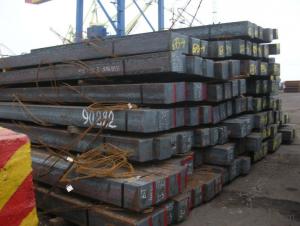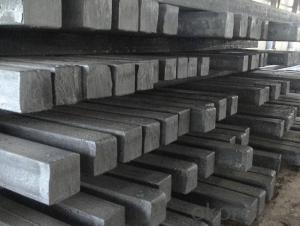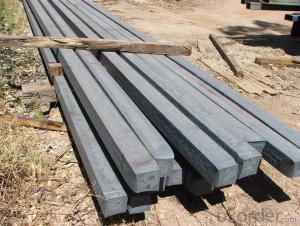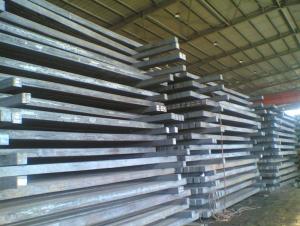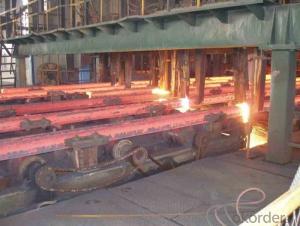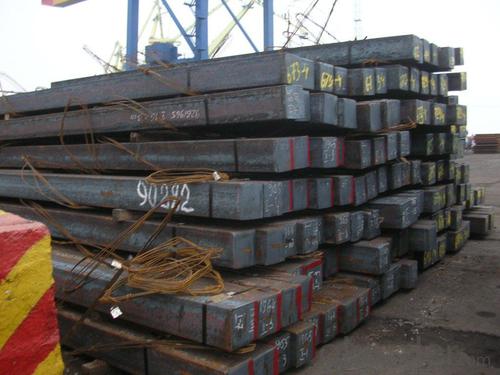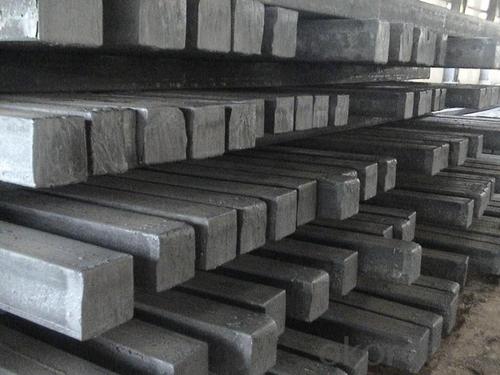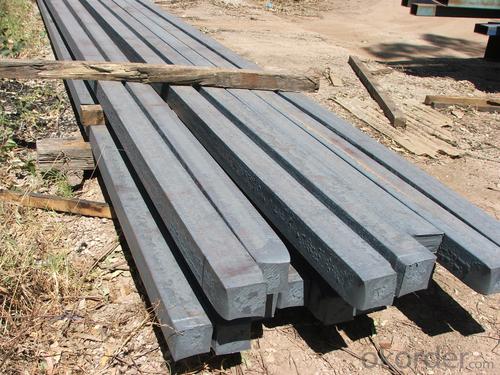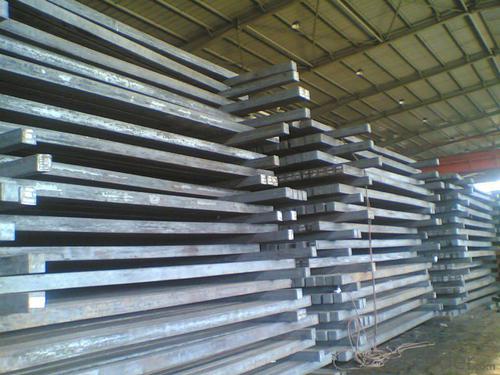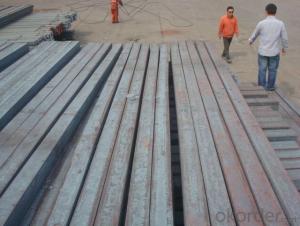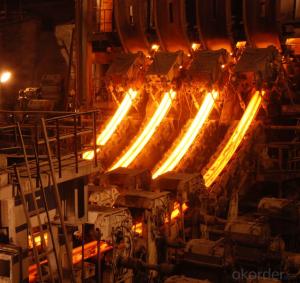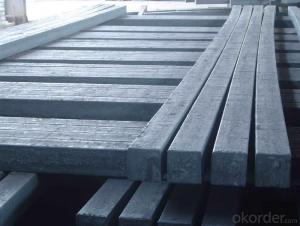Hot Rolled Square Steel Billet 3SP Standard 175mm
- Loading Port:
- Shanghai
- Payment Terms:
- TT OR LC
- Min Order Qty:
- 2000 m.t.
- Supply Capability:
- 10000 m.t./month
OKorder Service Pledge
OKorder Financial Service
You Might Also Like
Structure of Hot Rolled Square Steel Billet 3SP Standard 175mm

Description of Hot Rolled Square Steel Billet 3SP Standard 175mm
PPGI is made by cold rolled steel sheet and galvanized steel sheets as baseplate, through the surface pretreatment (degreasing, cleaning, chemical conversion processing), coated by the method of continuous coatings (roller coating method),
and after roasting and cooling. Zinc coating: Z60, Z80, Z100, Z120, Z180, Z275, G30, G60, G90
Alu-zinc coating: AZ60, AZ80, AZ100, AZ120, AZ180, G30, G60, G90
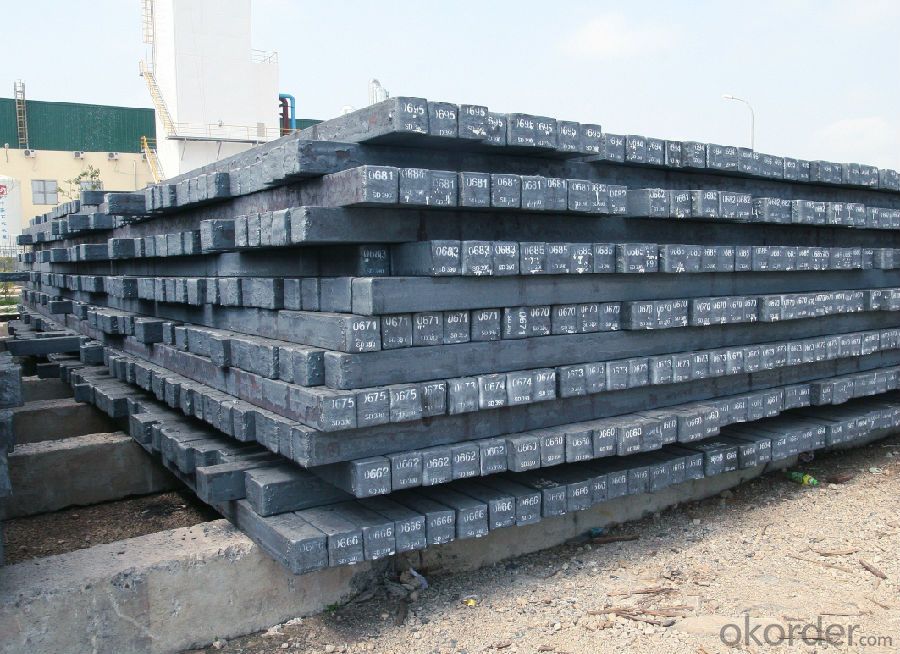
Main Feature of Hot Rolled Square Steel Billet 3SP Standard 175mm
1) Excellent corrosion resistance: The zinc layer provides a good protection of Pre-painted Galvanizeed Steel Sheet.
2) High heat resistance: The reflective surface of the material aids in efficiently reflecting the sunlight away and in turn reducing the amount of heat transmitted. The thermal reflectivity converts into energy savings.
3) Aesthetics: Pre-Painted Galvanized steel sheet is available in plethora of patterns and multiple sizes as per the requirements that given by our customers.
4) Versatility: can be used in the various areas.Standard seaworthy export packing: 3 layers of packing, inside is kraft paper, water plastic film is in the middle and outside GI steel sheet to be covered by steel strips with lock, with inner coil sleeve.
Applications of Hot Rolled Square Steel Billet 3SP Standard 175mm
1) Automotive bodies: filters, fuel tanks, etc.
2) Construction materials: roofings, welding pipes,
3) Electric and electronic appliances: computer cans, etc.
4) Steel cans: containers, etc.
5) Steel furniture: washing machines, refrigerators, microwaves, etc.
6) Drums
7) Office equipment: printer, recorders, etc.
8) Motors and transformers
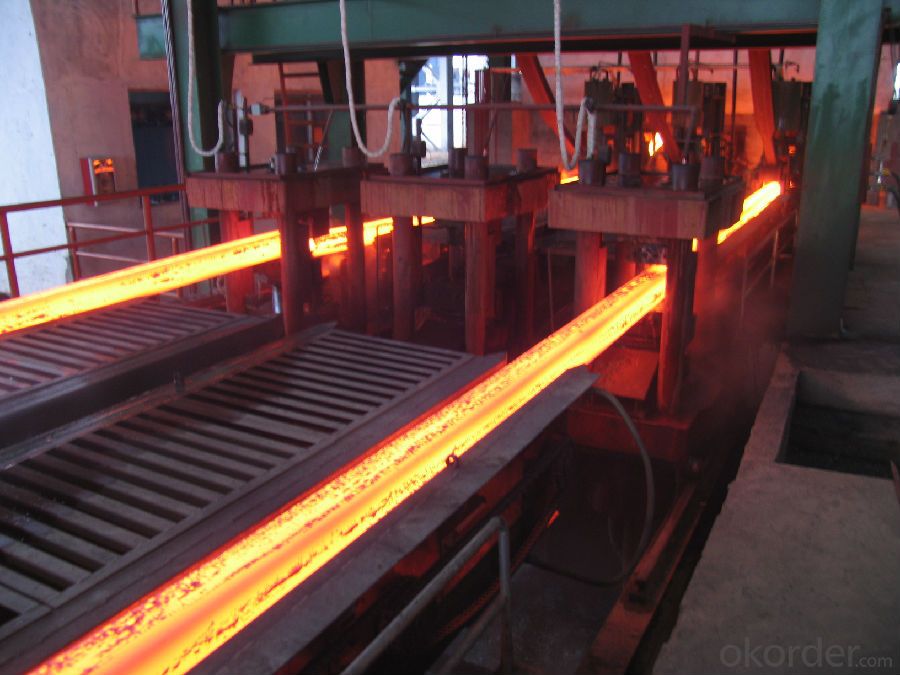
Specifications of Hot Rolled Square Steel Billet 3SP Standard 175mm
| Classified symbol | Yield Point Minimum N/mm2 | Tensile Strength Minimum | Elongation Minimum % | Application | ||||
| N/mm2 | Nominal Thickness mm (t) | |||||||
| JIS | Yogic | 0.25-0.4 | 0.4-0.6 | 0.6-1.0 | 1.0-1.6 | |||
| G3312 | specification | |||||||
| CGCC | CGCC | -205 | -270 | -20 | -21 | -24 | -24 | Commercial |
| CGCD | CGCD | --- | 270 | --- | 27 | 31 | 32 | Drawing |
| --- | CG340 | 245 | 340 | 20 | 20 | 20 | 20 | Structural |
| CGC400 | CG400 | 295 | 400 | 16 | 17 | 18 | 18 | Structural |
| CGC440 | CG440 | 335 | 440 | 14 | 15 | 16 | 18 | Structural |
| CGC490 | CG490 | 365 | 490 | 12 | 13 | 14 | 16 | Structural |
| CGC570 | CG570 | 560 | 570 | --- | --- | --- | --- | Structural |
| ASTM Designation | Yield Point Minimum | Tensile Strength Minimum | Elongation Minimum % | Application | Q/BQB 445-2004(China standard) | ASM A653/A653M | JISG 3312 | |
| ksi(MPa) | ksi(MPa) | TDC51D+Z | (CS TYPE A+Z) | CGCC | ||||
| A653(M)-99 CS TYPE A,B,C | --- | --- | --- | Commercial | TDC52D+Z | CGCD | ||
| A653(M)-99 FS | --- | --- | --- | Lock Forming | TS250GD+Z | (G250+Z) | - | |
| A653(M)-99 DS | --- | --- | --- | Drawing | TS300GS+Z | (G300+Z) | CGC 400 | |
| A653(M)-99 SS Grade33(230) | 33(230) | 45(310) | 20 | Structural | TS350GD+Z | (G350+Z) | CGC490 | |
| A653(M)-99 SS Grade37(255) | 37(255) | 52(360) | 18 | Structural | TS550GD+Z | (G550+Z) | CGC570 | |
| A653(M)-99 SS Grade40(275) | 40(275) | 55(380) | 16 | Structural | ||||
| A653(M)-99 SS Grade50(345) | 50(345) | 65(450) | 12 | Structural | ||||
| A653(M)-99 SS Grade80(550) | 80(550) | 82(570) | --- | Structural | ||||
FAQ of Hot Rolled Square Steel Billet 3SP Standard 175mm
We have organized several common questions for our clients,may help you sincerely:
1. How Can I Visit There?
Our company is located in Tianjin City, China, near Beijing. You can fly to Tianjin Airport Directly. All our clients, from home or aboard, are warmly welcome to visit us!
2. How Can I Get Some Sample?
We are honored to offer you sample.
3. Why choose CNBM?
1, ISO, BV, CE, SGS approved.
2, Competitive price and quality.
3, Efficient service team online for 24 hours.
4, Smooth production ability(50000tons/month) .
5, quick delivery and standard exporting package.
6, Flexible payment with T/T, L/C, Paypal, Kunlun bank, etc.
- Q: What are the potential applications of steel billets in the chemical sector?
- Steel billets have a wide range of potential applications in the chemical sector. One of the main uses of steel billets is in the construction of storage tanks and containers for the transportation and storage of chemicals. Steel billets are highly durable and can withstand the corrosive nature of many chemicals, making them ideal for this purpose. Additionally, steel billets can be used in the construction of pipes and tubing systems for chemical processing plants. These pipes and tubing systems are used to transport various chemicals throughout the facility and need to be able to withstand high pressures and temperatures. Steel billets provide the strength and durability required for these applications. Another potential application of steel billets in the chemical sector is in the production of chemical reactors. Chemical reactors are used in the manufacturing of various chemicals and require materials that can handle the harsh conditions involved in chemical reactions. Steel billets can be used to construct these reactors, providing the necessary strength and resistance to corrosion. Furthermore, steel billets can be utilized in the fabrication of various equipment used in the chemical sector, such as heat exchangers, distillation columns, and pumps. These equipment are essential for the processing and production of chemicals, and steel billets provide the necessary strength and reliability required for their operation. Overall, the potential applications of steel billets in the chemical sector are vast and varied. Their durability, strength, and resistance to corrosion make them an ideal choice for various construction and fabrication purposes in chemical processing plants, storage facilities, and equipment manufacturing.
- Q: How are steel billets cast into shape?
- The process of continuous casting is used to shape steel billets. In this process, molten steel is poured into a copper mold that is cooled by water. The mold is in the shape of a billet, and as the steel is poured, it starts to solidify along the mold's walls. To ensure complete solidification, a water spray is employed at the bottom of the mold, rapidly cooling the steel. As the steel solidifies, it is continuously pulled out of the mold either by a set of rollers or a chain conveyor. Once the billet has solidified entirely, it is cut into desired lengths using a high-speed torch or saw. These cut billets are then transported to the next stage of the steel manufacturing process, such as rolling or forging, where they are further shaped into the final product. Continuous casting enables the production of steel billets with consistent cross-sectional shapes and sizes. This efficient process generates high-quality steel products while minimizing waste.
- Q: What are the main challenges in the quality control of steel billets?
- The main challenges in the quality control of steel billets include ensuring the correct chemical composition, proper and uniform microstructure, accurate dimensions, surface defects, and overall mechanical properties. Additionally, maintaining consistent quality throughout the production process, monitoring temperature and cooling rates, and detecting any potential contamination or impurities are also significant challenges.
- Q: Are steel billets used in the production of sporting goods?
- Yes, steel billets are commonly used in the production of sporting goods. They are often utilized to create various components such as the shafts of golf clubs or the frames of bicycles. Steel billets provide durability and strength to these sporting goods, making them suitable for intense physical activity.
- Q: What are the different types of steel billet forming processes?
- The different types of steel billet forming processes include hot rolling, cold rolling, extrusion, forging, and casting.
- Q: What are the potential defects or flaws in steel billets?
- There are several potential defects or flaws that can occur in steel billets, which can affect the quality and performance of the final product. Some of these defects include: 1. Surface defects: Steel billets can develop surface cracks, scales, or scratches during the manufacturing process. These defects can weaken the material and reduce its structural integrity. 2. Internal defects: Inclusions, such as non-metallic impurities or gas bubbles, can be present within the steel billets. These internal defects can cause localized weaknesses and reduce the overall strength of the material. 3. Segregation: Uneven distribution of alloying elements or impurities can lead to segregation, where certain areas of the billet have different chemical compositions. Segregation can result in inconsistent mechanical properties across the material and decrease its uniformity. 4. Central segregation: This defect occurs when there is a concentration of impurities or alloying elements in the central region of the billet, leading to a weaker core. Central segregation can cause structural failures and reduce the overall reliability of the steel billet. 5. Shrinkage cavities: During the solidification process, shrinkage cavities can form in the steel billet due to the contraction of the molten metal. These cavities can weaken the material and compromise its structural integrity. 6. Surface decarburization: Exposure to high temperatures or improper heat treatment can cause the surface of the steel billet to lose carbon content, resulting in surface decarburization. This defect can reduce the hardness and strength of the material. 7. Laminations: Laminations are thin, elongated voids or layers that can form parallel to the surface of the billet. These defects can weaken the material and make it prone to cracking or failure under stress. 8. Internal cracks: Internal cracks can occur due to improper cooling or handling of the billet during the manufacturing process. These cracks can compromise the structural integrity of the steel billet and potentially lead to catastrophic failure. It is important to detect and address these defects early on to ensure the quality and reliability of the steel billets. Various non-destructive testing techniques, such as ultrasonic testing or magnetic particle inspection, can be utilized to identify and mitigate these potential flaws.
- Q: What are the specifications for alloy steel billets used in the defense industry?
- The defense industry requires alloy steel billets that meet specific criteria for each project. However, there are commonly followed specifications. Firstly, strict material standards must be met, and certification to military or industry specifications is necessary. These specifications cover the chemical composition, mechanical properties, and heat treatment of the alloy steel. The chemical composition is crucial as it determines the material's strength, hardness, and resistance to corrosion and high temperatures. Alloying elements like chromium, molybdenum, vanadium, and nickel are commonly used. Additionally, the carbon content is controlled to achieve desired strength and toughness. In terms of mechanical properties, defense applications require high strength, toughness, and impact resistance. The billets must withstand extreme conditions like high pressure, shock, and vibrations. Specific heat treatments, such as quenching and tempering, may be employed. Dimensional specifications are also important, including precise size and shape tolerances and surface finish requirements. This ensures compatibility with manufacturing processes and final products. Furthermore, certification to industry or military standards like MIL-STD or ASTM specifications may be necessary. These standards outline testing methods, quality control requirements, and performance criteria for the alloy steel billets. Overall, the specifications for alloy steel billets used in the defense industry cover chemical composition, mechanical properties, dimensional tolerances, and adherence to industry or military standards. These specifications are vital for ensuring the performance, durability, and safety of defense products.
- Q: Our caster is square billet! 150X500! That is, every time we open the head, there is slag inclusion. And pores! Yes, the first 3 meters! There's no more left behind! How did it happen, please?! We have a refinery and electromagnetic stirring! Give me a hand!
- the only way to avoid pinhole of slag situation.1, after foaming, a large amount of gas and residue are produced, which is the main source of porosity and slag inclusion in the cast steel.2, steel casting pouring system or ingate structure is not reasonable, easy to make the gas and residue involved in the liquid metal, the formation of porosity and slag.3, pouring temperature is too low, can not make the cast steel parts of the gas and residue fully excluded, floating up to the top of the casting, but also easy to produce porosity and slag inclusion.4, in some parts of the cast steel parts, when the permeability of the paint is very low, due to the role of gas back pressure, it is easy to make the gasification gas wrapped in the epidermis, forming a package of gas".
- Q: How are steel billets used in the manufacturing of electrical equipment?
- Steel billets are used in the manufacturing of electrical equipment in various ways. One of the main applications is in the production of electrical transformers. Transformers are crucial components in electrical systems as they transfer electrical energy between different voltage levels. Steel billets are used to manufacture the core of transformers, which is responsible for efficiently transferring the electrical energy. The steel billets are first heated and then rolled into thin strips or sheets, which are then cut into specific shapes and sizes to form the core laminations. These laminations are stacked together and insulated to minimize energy losses and ensure efficient power transfer. The use of steel billets ensures the core's strength, durability, and magnetic properties, which are essential for the transformer's functionality. Steel billets are also utilized in the manufacturing of other electrical equipment such as motors and generators. In these applications, the billets are formed and machined into specific components, such as rotor and stator cores, that play a vital role in the generation and conversion of electrical energy. Moreover, steel billets are used in the production of electrical enclosures and cabinets, which protect sensitive equipment and wiring from external factors like moisture, dust, and physical damage. These billets are shaped, welded, and assembled to create sturdy and reliable enclosures that house electrical components. Overall, steel billets are an integral part of the manufacturing process for electrical equipment. Their versatility, strength, and magnetic properties make them suitable for various applications, ensuring the efficiency, reliability, and longevity of electrical systems.
- Q: How are steel billets used in the manufacturing of machine parts?
- Steel billets are an essential raw material in the manufacturing of machine parts. These billets are solid, semi-finished steel products that are cast into specific shapes and sizes. The process of using steel billets involves various stages. Firstly, the steel billets are heated in a furnace to a specific temperature, which softens the metal and makes it more malleable. Once the billets reach the desired temperature, they are ready for further processing. Next, the heated billets are transferred to a rolling mill, where they undergo a process called hot rolling. In this process, the billets are passed through a series of rollers, which apply pressure and shape them into desired forms such as bars, rods, or sheets. The hot rolling process ensures that the steel billets achieve the required dimensions and surface finish. After hot rolling, the shaped steel billets are further processed through different techniques such as cutting, forging, or machining to fabricate machine parts. These parts can include gears, shafts, valves, or any other component required for machinery. The use of steel billets in the manufacturing of machine parts offers several advantages. Firstly, steel billets are known for their high strength and durability, making them ideal for producing parts that can withstand heavy loads and harsh operating conditions. Additionally, the malleability of steel billets allows for the creation of intricate shapes and designs, ensuring the production of complex machine parts. Moreover, steel billets can be easily customized to meet specific requirements. They can be alloyed with other metals or undergo various heat treatments to enhance their properties such as hardness, corrosion resistance, or wear resistance. This versatility of steel billets makes them suitable for a wide range of machine parts across different industries. In conclusion, steel billets play a crucial role in the manufacturing of machine parts. Through processes such as hot rolling, cutting, forging, and machining, steel billets are transformed into various shapes and sizes to create durable and high-quality components for machinery. The versatility and strength of steel billets make them an indispensable raw material in the manufacturing industry.
Send your message to us
Hot Rolled Square Steel Billet 3SP Standard 175mm
- Loading Port:
- Shanghai
- Payment Terms:
- TT OR LC
- Min Order Qty:
- 2000 m.t.
- Supply Capability:
- 10000 m.t./month
OKorder Service Pledge
OKorder Financial Service
Similar products
Hot products
Hot Searches
Related keywords
